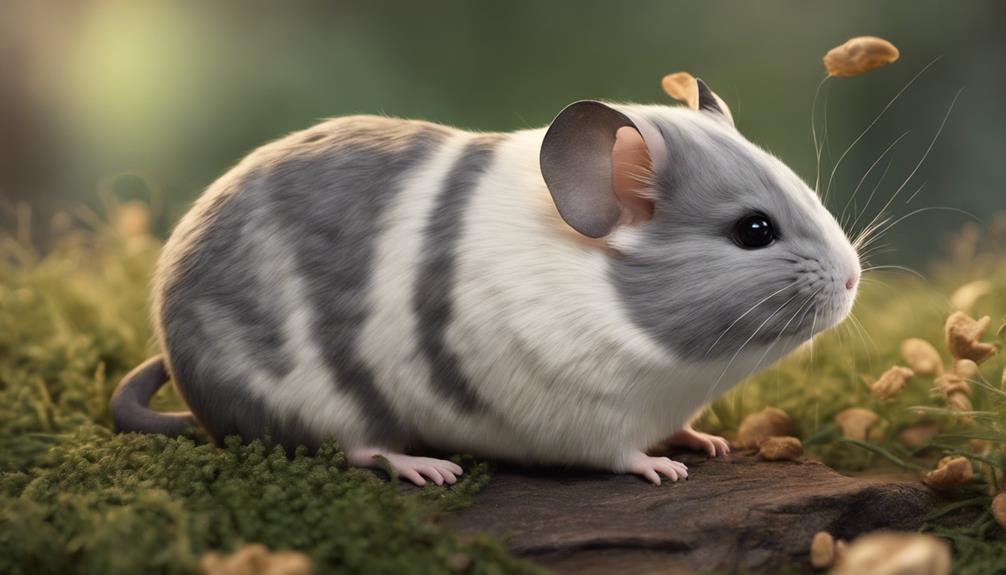In the desert, animals survive extreme heat by staying out of the sun during hottest periods, often becoming active at night to conserve water and avoid dehydration. They burrow underground for cooler shelter, and many have efficient kidneys to minimize water loss. Some insects and reptiles also use tough exoskeletons to retain moisture. By adopting these strategies, desert animals thrive despite the harsh conditions—discover more about their fascinating adaptations as you explore further.
Key Takeaways
- Many desert animals are nocturnal, active after sunset to avoid daytime heat and reduce water loss.
- Animals burrow underground during hot periods, accessing cooler, shaded environments to conserve water and stay cool.
- Some species have specialized kidneys that efficiently conserve water, minimizing dehydration.
- Adaptations like thick, water-retentive exoskeletons help insects retain moisture in dry conditions.
- These survival strategies work together, allowing animals to endure extreme heat and scarce water resources.

Living in the desert means adapting to a harsh, arid environment where water is scarce and temperatures can soar. To survive in such extreme conditions, both plants and animals have developed remarkable strategies. You’ll notice that desert plants, for example, have unique adaptations that allow them to conserve water and thrive despite the dry climate. Many have thick, waxy coatings on their leaves or stems to reduce water loss through evaporation. Others, like cacti, store water in their fleshy tissues, making them resilient during long droughts. Some desert plants even have deep root systems that reach underground water sources, ensuring they get moisture even when the surface is bone dry. During the day, many of these plants remain dormant or close their stomata to prevent water from escaping, only opening them at night to absorb whatever humidity they can from the cooler air. This process, known as desert plant adaptations, is essential for their survival. Additionally, some plants employ water-conserving mechanisms that further enhance their ability to withstand prolonged dry periods. These mechanisms are often complemented by the plants’ ability to enter dormant states during the hottest months, conserving energy and water until conditions improve. The ability of desert plants to efficiently manage water is directly linked to their specialized physiological features, which are crucial for their endurance in such extreme environments. Moreover, many desert plants have developed drought-resistant traits that enable them to survive even in the most extreme drought conditions. Animals in the desert employ equally clever tactics, especially nocturnal animal behaviors. As daytime temperatures climb to unbearable levels, many creatures become active only after the sun sets. You might observe small mammals, insects, and reptiles emerging under the cover of darkness, avoiding the intense heat of the day. Nocturnal behaviors help them conserve water and stay cool, reducing the risk of dehydration and heatstroke. For example, some animals have highly efficient kidneys that minimize water loss, while others, like certain insects, have exoskeletons that retain moisture. Many desert animals also burrow underground during the hottest parts of the day, retreating to cooler, shaded environments where they can rest and hide from predators. This behavior not only helps animals escape extreme heat but also reduces water loss, as they’re not exposed to the scorching sun. These burrowing habits are facilitated by their specialized adaptations, which allow them to dig and survive underground environments efficiently. You’ll find that these adaptations are interconnected, forming a complex survival system. Desert plants’ ability to store water and minimize transpiration pairs perfectly with animals’ nocturnal activities and burrowing habits. Together, these strategies create a delicate balance that allows life to persist in one of the planet’s most challenging environments. If you visit the desert, pay attention to how subtly these adaptations work—they’re proof of nature’s incredible resilience. Whether it’s a cactus soaking up the cool night air or a fox prowling after sunset, every adaptation plays a crucial role in enduring the extreme heat and making life possible amid the arid sands.
Frequently Asked Questions
How Do Desert Animals Find Water Sources?
You might wonder how desert animals find water sources. They use water conservation strategies, like storing water or reducing activity during the hottest parts of the day. They also rely on desert plant animal interactions, such as drinking dew from plants or eating water-rich succulents. These adaptations help them survive with minimal water, ensuring they stay hydrated despite the harsh environment.
What Are the Longest-Lived Desert Animals?
Imagine wandering the arid landscape, where the longest-lived desert animals quietly endure. You’d notice the resilient desert tortoise, living over 50 years, thanks to desert plant adaptations like leathery shells and slow metabolism. Their camouflage blends seamlessly with sandy dunes, helping them avoid predators. These hardy creatures survive decades, embodying the desert’s silent endurance, reminding you of nature’s incredible ability to thrive amid extreme conditions.
How Do Nocturnal Animals Stay Warm During Cold Desert Nights?
You might wonder how desert animals survive cold nights. Nocturnal behavior is a key adaptation, allowing them to stay active during cooler evenings and nights. These desert animals have special adaptations, like thick fur or fat layers, to stay warm when temperatures drop. By being active at night and using their desert animal adaptations, they effectively conserve energy and maintain their body temperature despite the cold desert nights.
Do Desert Animals Migrate Seasonally?
You might wonder if desert animals migrate seasonally. Many do, moving to cooler areas during extreme heat, much like desert plants adapt with deep roots or water storage. You’ll notice desert animals use camouflage to blend into their environment, helping them avoid predators while they seek better conditions. Migration isn’t the only survival tactic; these adaptations work together to guarantee their survival amidst the harsh desert climate.
How Do Young Animals Survive the Extreme Heat?
Imagine young animals as tiny explorers in a blazing desert, fighting to survive. They rely on desert plant adaptations, like deep roots and reflective surfaces, to stay cool and hidden. Their camouflage helps them blend into the harsh surroundings, avoiding predators and the scorching sun. By staying close to shelter, seeking shade, and timing activity during cooler parts of the day, they master the art of survival amid extreme heat.
Conclusion
As the blazing sun dips below the horizon, you can almost hear the desert breathe. The animals, like silent shadows, retreat to cool hideaways, their bodies adapting to withstand the relentless heat. You realize that beneath the scorching surface, life persists—resilient and unwavering. In this vast, fiery landscape, survival isn’t just about enduring the heat; it’s about thriving amidst the shimmering sands, where every creature has found its own way to beat the desert’s fierce heartbeat.










